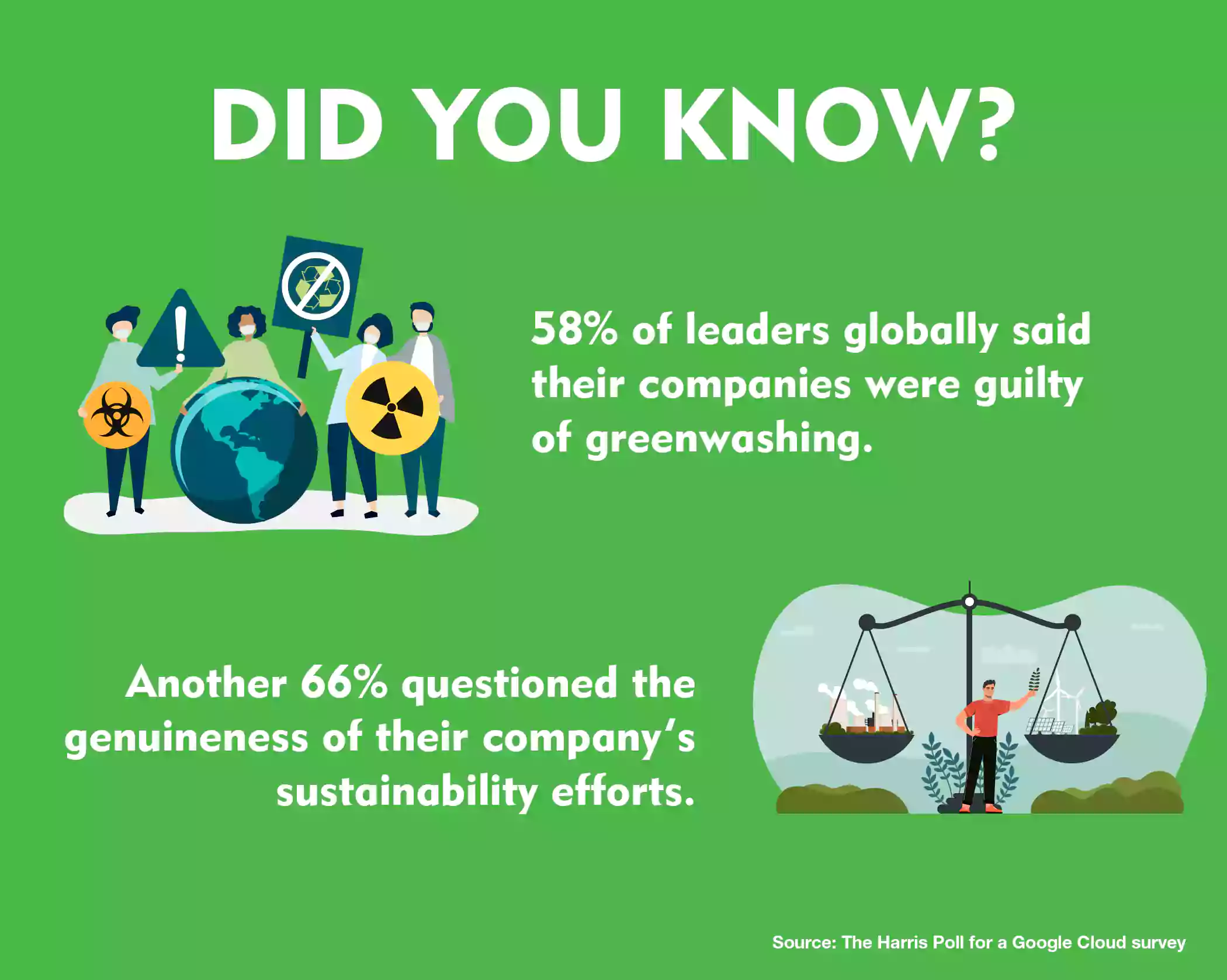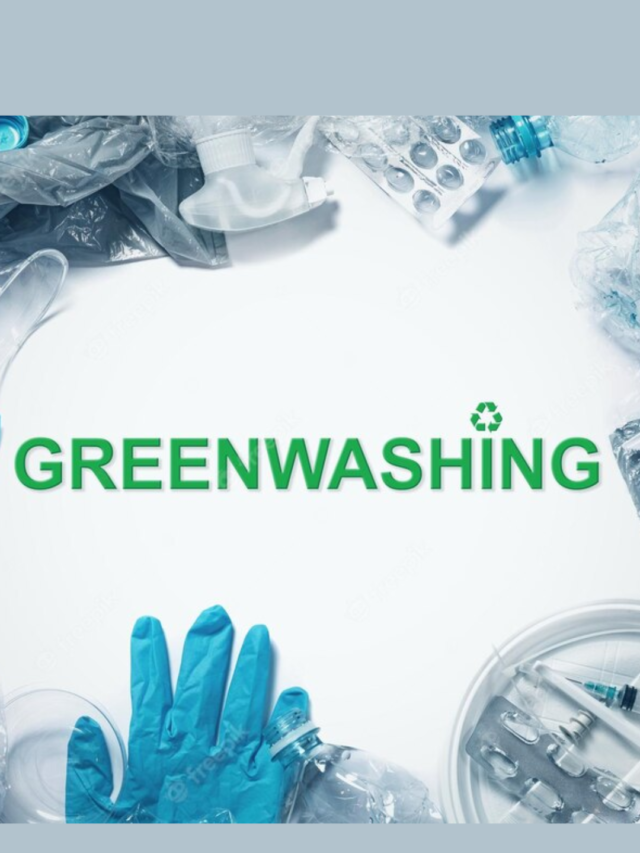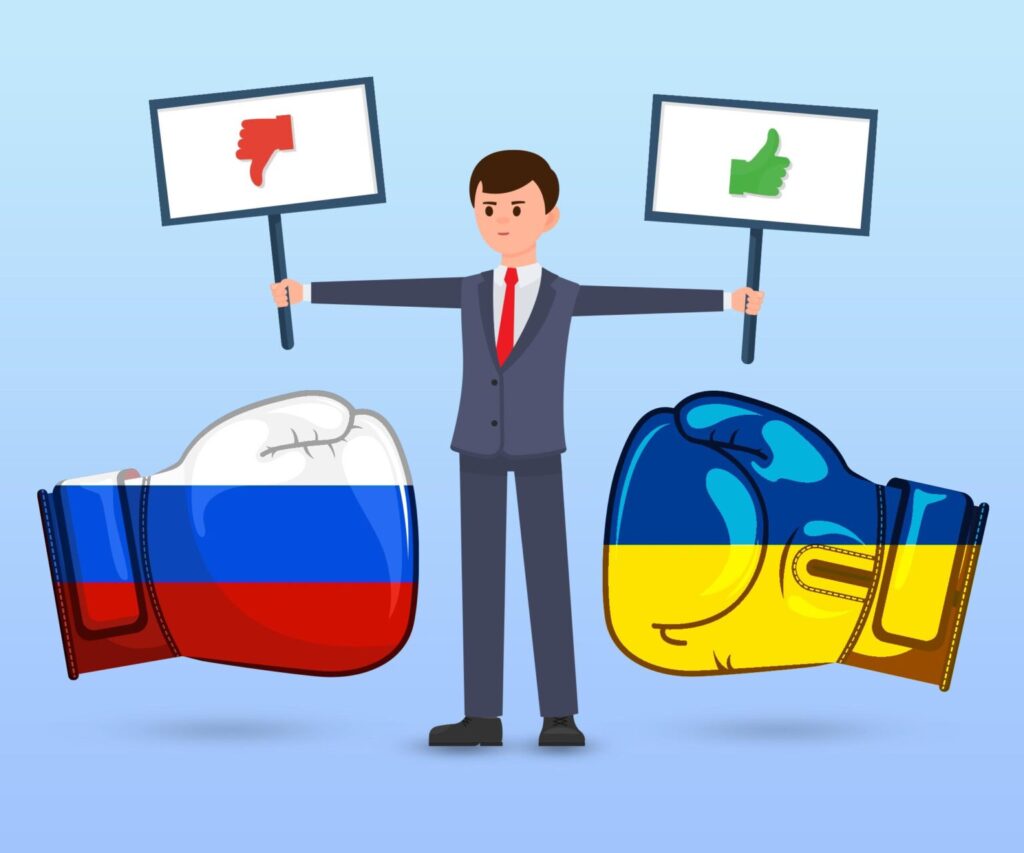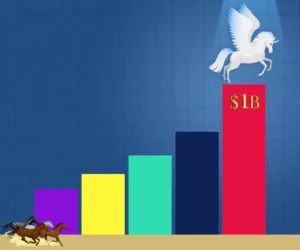
With the effects of climate change and global warming worsening rapidly, humankind can no longer defer sustainability concerns. These concerns are dominating the policy-making landscape across nations. Governments are developing numerous standards, norms, rules, regulations, and specialised bodies to keep environmentally harmful practices in check. For example, the Indian government started implementing Bharat Emission Standards in the early 2000s to curb pollution in the country’s growing urban areas. Governments and companies in the private sector should ideally work together to contain environmental degradation. However, complying with these rules and regulations, which undergo frequent changes and corrections, is costly for organisations. To avoid these additional costs, companies resort to “greenwashing”.
What is greenwashing, and how does it work?
In simple terms, greenwashing is a fraudulent activity that involves an organisation making false claims about the sustainability of a product or a service. Often, companies make exaggerated statements about how environmentally friendly their product is, which is also a form of greenwashing. For example, a garments company may claim that their clothes are made of entirely recycled materials or only from natural fabrics. However, this claim distracts consumers from the fact that the process of producing these clothes still creates by-products that cause air and water pollution. In such cases, greenwashing creates an illusion of sustainability. As a practice, it has become a standard feature across industries, especially in those sectors where production processes directly harm the environment.
Let’s bring three specific examples under the lens to understand how greenwashing plays out, shall we?
(1) NRDC exposes greenwashing in plastic recycling
The US is one of the world’s largest producers of plastic waste and recycles only about 8.7% of its plastic waste. According to the Natural Resources Defense Council (NRDC), the plastics industry has been using greenwashing techniques to advocate waste treatment technologies under the generic and misleading term “chemical recycling”. An analysis by the NRDC revealed three disturbing facts about these chemical recycling facilities:
- They generate hazardous air pollutants and other waste products.
- They are not recycling any plastic waste.
- You can find these facilities in areas with low-income communities, coloured communities, or sometimes both.
(2) IKEA’s sustainability claims questioned
In June 2020, Earthsight, an NGO based in the UK, reported that the Swedish furniture giant was selling chairs made from illegally-felled beech trees from the Carpathian Mountains of Ukraine. According to Earthsight, the Forest Stewardship Council (FSC) certified IKEA for its sustainable products. The FSC is an organisation known to greenwash the timber industry. This report has brought the furniture company, once lauded for its pioneering sustainability efforts, under the scanner.
(3) Volkswagen’s attempt to cheat emission tests
Volkswagen was embroiled in a high-profile greenwashing case a few years ago. In September 2015, the US Environmental Protection Agency (EPA) found that the German automaker had installed a device or software in its diesel cars sold across the US. The device could detect when the engine was undergoing testing. Once the device detected testing, it could alter the engine’s performance to exhibit falsely improved results. After the EPA publicised these revelations, Volkswagen admitted to fitting the same device in 11 million cars it sold globally. The eruption of this controversy resulted in two things. Firstly, it tainted the image of Volkswagen worldwide. Secondly, it opened the whole auto industry to public scrutiny.

Why greenwashing hurts
Any false or misleading advertising erodes the consumer’s trust in a product or service. Greenwashing by companies has the same effect. This effect gets further magnified if reputed organisations adopt such practices. Given the impact greenwashing can have on the environment, the erosion of trust becomes all the more significant. As it is, people already have their misgivings about the efforts toward sustainable development. Moreover, some factors keep greenwashing from facing its rightful penalty. Vested business, lack of political will, dishonest reduction of production costs, and bureaucratic lethargy are only some of them. As a result, greenwashing severely dilutes the cause of sustainability. What’s more, environmental degradation and pollution impact every person, sparing none. Therefore, the positive engagement of all stakeholders is critical for sustainable development to be a success story.
Can greenwashing be kept in check?
With the increasing number of instances of companies making false sustainability claims, the need to quell greenwashing has become paramount. National governments and international organisations are focussing on tightening regulations governing sustainability practices. For example, in 2005, a UN (United Nations)-supported group of investors developed the Principles of Responsible Investment (PRI). They formulated these “principles” to encourage the factoring of sustainability issues in investment decisions. Sustainability Accounting Standards Board (SASB) is another such framework that facilitates environmental, social, and governance (ESG) disclosures. Their objective is to bring more transparency to sustainability efforts by the corporate sector. More stringent implementation of these regulations is the need of the hour. It will nudge companies towards reprocessing the information they disclose to their investors and consumers, making them more responsible.



